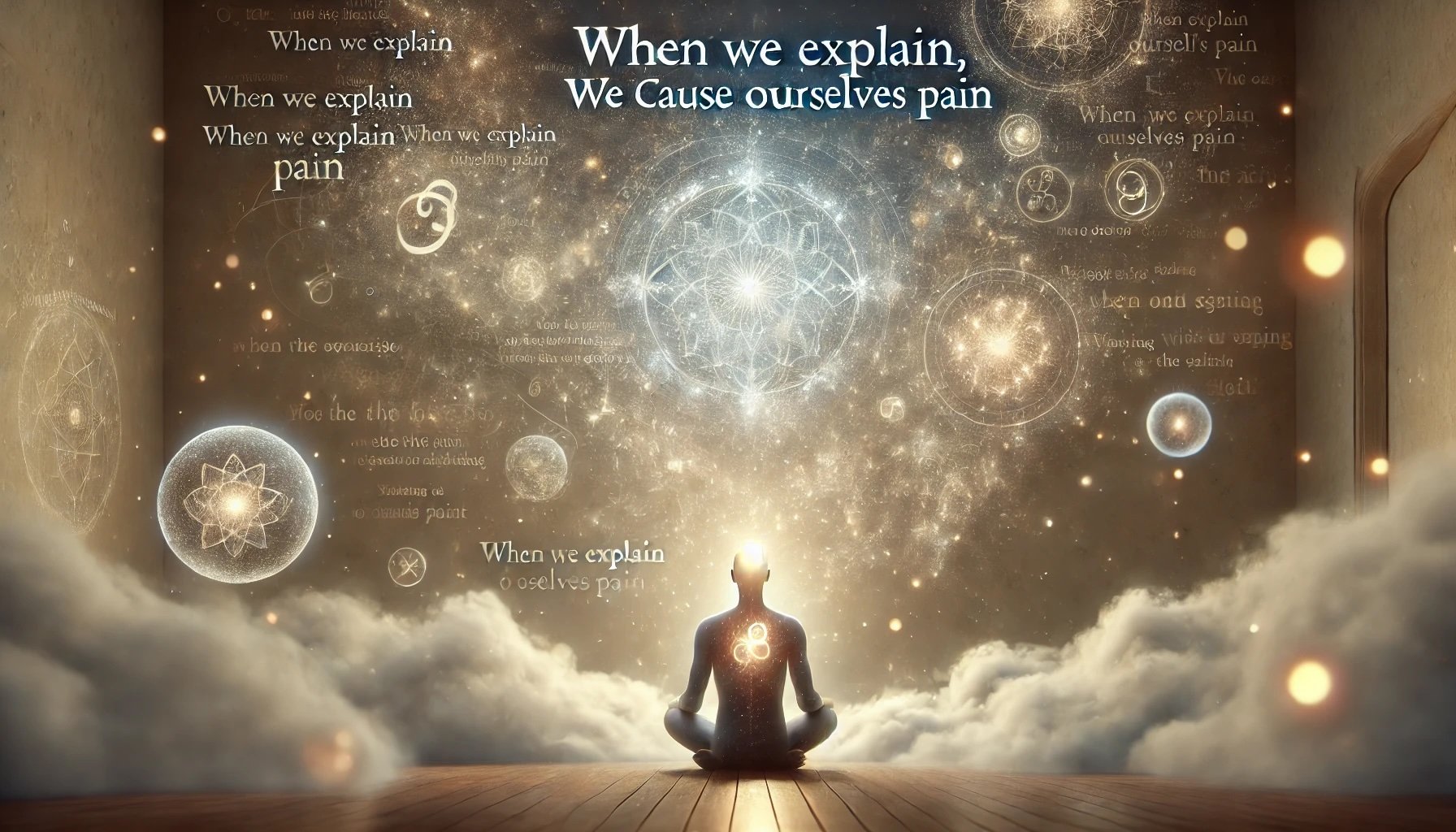When We Explain, We Cause Ourselves Pain
When We Explain, We Cause Ourselves Pain
Most of you think of your thoughts as yourself. The voice in your head narrating, interpreting, explaining—that voice feels like you. It walks with you everywhere, tirelessly offering context, commentary, reasoning.
But that voice is not you.
That voice is the Explainer. And the Explainer is a construct that arises only when we perceive separation. It exists because we believe we are apart from life, from others, from ourselves. And so it tries to bridge that gap by telling a story about what is happening.
But in doing so, it creates pain.
The Birth of the Explainer
When we perceive ourselves as separate from reality, we begin to interpret it. We try to make sense of what we are experiencing by thinking about it. The mind generates thoughts—not because they are needed, but because the sense of separation demands interpretation.
The Explainer arises to narrate what the self believes it does not understand. But this narration is always one step removed from truth. It is a translation of reality into concepts. And translation is distortion.
In truth, when we know, we do not need to explain. We simply know.
And yet we rarely allow ourselves to rest in that knowing. Instead, we explain—to ourselves, to others, to an imagined audience. And each time we explain, we fragment the directness of the moment into something abstract, fragile, and partial.
Thought as Attachment
Every thought is an attachment showing itself.
This truth cuts to the core of the Explainer's function. When we are identified with our thoughts, we are not identified only with the voice—we are identified with our attachments. All thought arises from the tension of grasping: a need, a desire, a fear. It all arises from separation.
So if you believe your thoughts are you, and if your thoughts are attachments, then the thing that you believe you are is your attachments.
The Explainer reinforces this identity. It speaks the language of craving, resistance, justification. It defends the parts of you that are still in pain. It protects the structures that no longer serve you by giving them reasons to exist.
And this identification creates suffering. Because the more you believe the Explainer is you, the more you live in defense of fragmentation.
The Pain of Explanation
Explanation always lags behind truth.
It takes what was alive and turns it into a story. It freezes the movement. It interrupts the flow. And worst of all, it introduces doubt. Because if you have to explain it, you are already stepping away from it.
We explain to be safe. We explain to be right. We explain to be understood. But each explanation subtly affirms: I do not trust that my truth can simply be.
And this is where the Explainer causes suffering. Every time you believe its voice is your own, you reinforce the underlying attachments it speaks from. It does not simply describe your reality—it creates it by anchoring your identity to what you cling to.
Even "positive" thoughts are not free from this. If you need to think positive thoughts, rather than simply embodying positivity, then you are still operating through attachment. The thought itself becomes a performance of alignment rather than its expression. True integration leaves no need to think about feeling good—you simply feel good, because you are whole.
The Explainer keeps us one step removed. One thought away from presence. One justification away from peace.
And so, pain. Not because explanation is wrong, but because it separates you from what you already are.
Beyond the Explainer: Living in Knowing
As we integrate, as we release attachment, the Explainer grows quiet. We begin to rest in a different mode of awareness—one that does not think about life, but lives it directly.
You begin to move without explaining. Speak without justifying. Act without narrating. You trust the moment, because you are in union with it.
There is nothing to explain when you are whole. There is only the movement of being.
The Invitation
Notice the Explainer. Gently, without judgment. Watch it arise, and instead of following it, return to the deeper knowing beneath it.
You are not your thoughts. You are not your explanations. You are not your attachments.
You are the one who knows before words.
You are the truth itself, moving.
And when you no longer need to explain, you discover the exquisite peace that was always waiting underneath the noise.
Silence. Clarity. Wholeness.
That is who you are.
